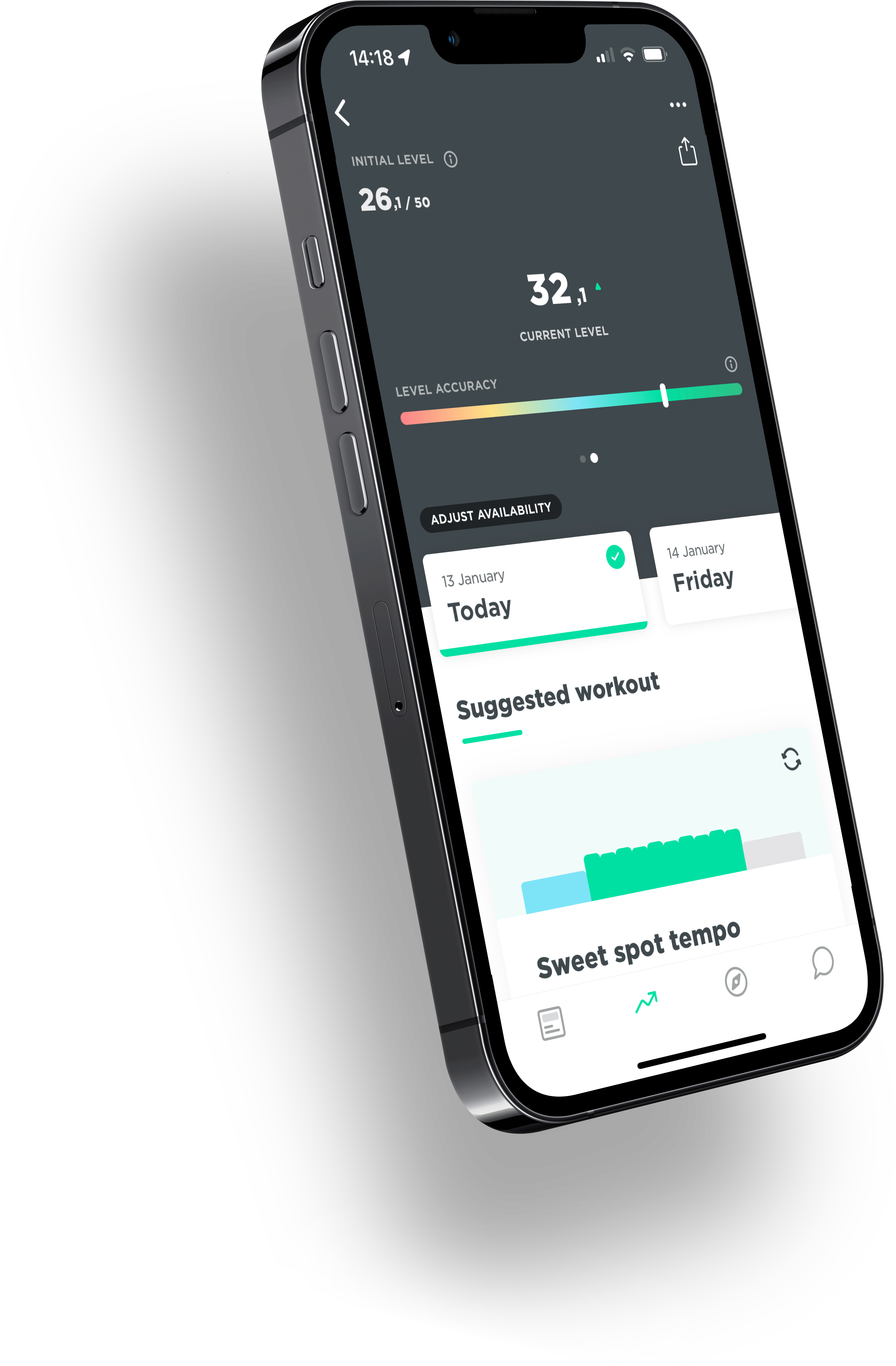Your Functional Threshold Power (FTP), or the anaerobic threshold, is often used as the measure of your fitness. FTP is the maximum power a person can produce over an hour. You can test, train and, above all, improve it. This power level, or your heart rate at your anaerobic threshold, are used to establish your training zones. Many cyclists aspire to increase their FTP in order to be able to ride harder, further, finish less tired and recover faster. Overall: to become a better rider. For these reasons, a higher FTP is the ultimate training goal for many cyclists. So how should you do that with polarized training?
How to improve your FTP
It would seem logical to train a lot at your FTP-level when you want to improve this value. But just training on your FTP is not the only and certainly not the best way to improve your FTP. To explain this we first need to step back and discuss a few basic principles from modern training theory.
When the intensity of a workout increases, the body starts to use more of its anaerobic energy system. This is because the aerobic system cannot produce enough energy anymore to keep up with the rise in power. The use of anaerobic energy systems trigger a higher lactate production. Eventually, two lactate thresholds are hit: the first one is not your FTP, but the point where your lactate concentration starts rising above the resting value (often around 2 mmol of lactate). This point is called the aerobic threshold.
The second threshold is your FTP or anaerobic threshold. At this second point the production and absorption lactate are precisely in balance. Above it, there will be a surplus in lactate production which causes an athlete to hit the wall. In theory, the FTP is the maximum intensity you can hold for 60 minutes. In reality this is not entirely true and there are large individual differences in how long you can ride at your anaerobic threshold. We don’t want to make it too complicated right now and assume for now that your FTP is a good estimate of your anaerobic threshold.
3-zone model
Based on these two thresholds, you can determine the 3-zone model. This model is often used in scientific studies to index the intensity. For example, the zones ‘below aerobic threshold’, ‘between aerobic and anaerobic threshold’ and ‘above anaerobic threshold’ are often used.
80/20 rule for Polarized training
In several (retrospective) studies, some remarkable observations were made. Many elite endurance athletes (cyclists, runners, swimmers, rowers and cross-country skiers) do not often train on or around their FTP, i.e. high in the second zone. Instead, these pros often train with 80/20 rule for Polarized training, ‘polarized training distribution’. This means that they train a lot below their aerobic threshold (zone 1) and a lot above their anaerobic threshold (zone 3). So there is almost no training between the aerobic and anaerobic threshold. Almost 80% of the training was at low intensity (below the aerobic threshold) and 10 to 20% of the training was above the anaerobic threshold in the form of interval training. This does not mean that 10% to 20% of the total training time was done in zone 3, but rather that 10% to 20% of the number of training sessions contained zone-3 intervals.
As a result of these results, a lot of further research has been done into this method of classifying training sessions and its effectiveness. This was done for many different sports at all kinds of levels and yielded interesting results. Recreational cyclists also showed the most improvement in their FTP when they trained 6 hours per week in a polarized way, compared to training plans that spent more time in between the aerobic and anaerobic threshold.
Background of Polarized training
To explain Polarized training may not even be that complicated. Training on your anaerobic threshold is very exhausting but you don’t use all your muscle groups at this intensity and you don’t get the maximum out of your heart/lung system. So you do get quite tired, but the training stimulus is less intensive than (shorter) cycling above your anaerobic threshold. That’s why it’s better to make sure you put a maximum load on the whole system and build up less fatigue, so you can do that more often. So, if you want to improve your FTP, it is very important that you look at the intensity of your workouts. Most recreational cyclists ride their easy rides too intensively but their hard rides are not done hard enough. Often because they are still tired from that easy ride that they did too hard! So train like a pro by doing polarized training!
How to get better?
Getting better is all about timing. There are actually no good or bad workouts. There is only a bad combination or the wrong workout at the wrong time. The path towards progress is therefore a training plan with the right training stimuli at the right time, taking into account your level, goal and available time.


